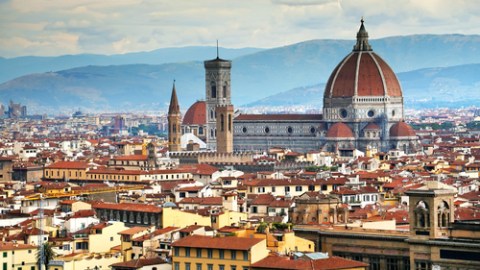The Future of Architecture = No New Buildings

You heard it here first. NO NEW BUILDINGS. The future of architecture hangs in the balance–a balance of energy and environmental constraints that will profoundly alter the way humans interact with their environment. For centuries architects have seen themselves as creators of the built environment–almost exclusively new buildings, landscapes, infrastructure, transit systems. For the first time the profession is being forced–against its collective will–to consider the unthinkable. Can the earth sustain an entirely new infrastructure under present conditions. If not, how much of the built environment will be “new” architecture during the next century?
In my recent lectures and writings, I have begun to consider a startling alternative vision for the planet and its human-made environments. What if, in the name of resource and energy conservation, the most energy and waste intensive endeavor, building, was limited to the alteration, conservation and reuse of existing structures? I am not the only person to have this vision, but I suspect most other proponents are environmentalists, not architects.
Conservation of the biosphere, according to pioneers such as Ian McHarg and Aldo Leopold, must account for a “right relationship” between all human endeavors and the planet’s fragile ecosystems. If building new bridges, highways, and larger buildings consumes too much energy and generates too much waste, why not consider repairing and conserving what we already have, much as our brethren in ecology have done with existing “natural” systems? Does this sound revolutionary? If the answer is yes, avant garde architects should be pleased, because revolution has been the watchword of our “progressive” artists for more than a century.
I suspect, however, that those contemporary architects who see themselves as occupying the “cutting edge,” like the team recently assembled by Frank Gehry for his new technology lab, are heavily invested in the status quo of wasteful, energy hogging high-tech wonders. They won’t want to forego years of “research” into absurdly expensive building systems simply to answer a pressing need for real solutions to the energy crisis that might be considered “low tech” or even “no tech.” As Jens Braun put it in his Quaker blog, it may be time to look at all new construction technology as un-green, or better, time to consider low tech alternatives to what we have been building for a century or more.
Should architects abandon the search for new built form in order to address the environmental crisis? Perhaps not, but looking at this presumably extreme alternative would be refreshing, useful, and maybe even revolutionary, in the way that Kuhn’s “scientific revolution” hypothesis described paradigm shifts. I am going to stay with this idea until I run out of reasons to abandon it. Building conservation has a lot to offer the architectural profession, and architects are certainly going nowhere with the current program.
Read more from Mark Hewitt on his blog here.





